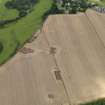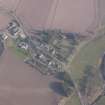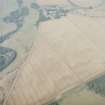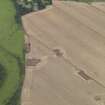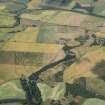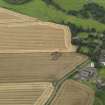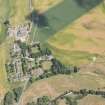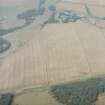Forteviot Village
Village (20th Century)
Site Name Forteviot Village
Classification Village (20th Century)
Alternative Name(s) Forteviot Parish
Canmore ID 26535
Site Number NO01NE.01
NGR NO 05175 17529
Datum OSGB36 - NGR
Permalink http://canmore.org.uk/site/26535
- Council Perth And Kinross
- Parish Forteviot
- Former Region Tayside
- Former District Perth And Kinross
- Former County Perthshire
NMRS MISCELLANEOUS:
Fort Teviot, Village.
Bedford Lemere Register, London 8 29261/9 - negatives.
Excavation (6 August 2007 - 26 August 2007)
NO 0510 1750 Two linked research objectives are focused in the immediate vicinity of Forteviot village. The first is to locate the Pictish royal settlement and ‘palace’ which documentary sources show existed in the 9th century, and the second is to gain some idea of the development of the village throughout the medieval
period. As a preliminary step, a number of test pits were dug around the village in the 2007 season (6–26 August). The test pits, all so far in gardens on the N side of the village, produced medieval pottery, including Scottish White Gritty Ware of 12th to 13th-century date, as well as oxidised and reduced green-glazed wares of later medieval date. However, all this material came from buried medieval ploughsoil, indicating that the core of the medieval village lies closer to the present street line and to the S.
Study of the parish church and graveyard showed the building had a longer structural history than had been realised. Stumps of two chancel walls and a possible buttress projecting from the E wall show that the rebuilding of the church in 1778 incorporated parts of an earlier building, which may have been medieval.
Areas of the village were also targeted for geophysical survey, including parts of the manse garden, the village green and the school grounds. The survey identified possible structures, a possible ditch and traces of the previous village on the village green, and included features well away from the core of modern Forteviot.
www.gla.ac.uk/departments/archaeology/research/projects/serf
Archive currently deposited with the Department of Archaeology, University of Glasgow.
Funder: British Academy, Historic Scotland, Department of Archaeology University of Glasgow, Society of Antiquaries of Scotland.
Excavation (4 August 2008 - 24 August 2008)
NO 0510 1750 Continuing the work from 2007, a 15 x 5m area was opened just S of the bowling green. A considerable depth of soil that produced medieval redware and was interpreted as a medieval ploughsoil was recorded, but no archaeological features. Test pits on the S and E sides of the village also failed to produce any evidence of medieval occupation. Considerable post-medieval disturbance had, in some areas, removed any earlier deposits. These results, combined with those of 2007, indicate that the medieval village occupied much the same area as the present one. No evidence was found of deposits which might indicate the location of the Pictish palace.
www.gla.ac.uk/archaeology/research/projects/SERF
Archive: RCAHMS
Funder: British Academy, Historic Scotland, Department of Archaeology University of Glasgow and Society of Antiquaries of Scotland
E Campbell and M Gondek (Department of Archaeology, University of Glasgow), 2008
Project (4 July 2011 - 6 July 2011)
NO 05144 17480 A geophysical survey was undertaken 4–6 July 2011 at four separate locations in Forteviot village, prior to the start of the SERF field school. The combination of gradiometer and multiplexed resistivity surveys carried out in the empty plot of land at the W end of the village known as the Haly Hill, at Forteviot Church burial ground, and on two areas in the grounds the Manse (Greylag House), revealed numerous anomalies that probably date from medieval to modern periods.
The Haly Hill survey revealed numerous rectilinear anomalies, which would appear to relate to the road and associated farm buildings shown on the 1st Edition OS map. The substantial variation in the multiplexed resistivity plots hint at a deep stratigraphy of occupation.
A gradiometer survey on the lawn of the former parish manse (now Greylag House) revealed what appear to be the foundations of medieval or post-medieval stone-built structures, probably relating to the manse and associated outbuildings. A weakly defined E–W linear anomaly was recorded across the length of the survey area. This may relate to the garden features depicted on the 1st Edition OS map, or the linear boundary ditch seen as a cropmark to the E of the manse, which was excavated by Ewan Campbell for the SERF project in 2010. A small area of the adjacent paddock was also surveyed, but this was heavily disturbed by modern service trenches and the results were inconclusive.
An exploratory grid of gradiometer survey was undertaken in the parish churchyard, including sections of both the medieval churchyard and the modern extension. Due to disturbance from post-medieval lairs and modern nailed coffins, the survey was inconclusive. The only clear feature was the line of the former boundary wall, which is still apparent on the ground surface. Due to the presence of fragile recumbent grave slabs, resistivity was not attempted in the churchyard.
Archive: University of Glasgow and RCAHMS (intended)
Funder: Historic Scotland and University of Glasgow
University of Glasgow, 2011
Magnetometry (4 July 2011 - 6 July 2011)
NO 05144 17480 Magnetometry survey.
Archive: University of Glasgow and RCAHMS (intended)
Funder: Historic Scotland and University of Glasgow
University of Glasgow, 2011
Earth Resistance Survey (4 July 2011 - 6 July 2011)
NO 05144 17480 Resistivity survey.
Archive: University of Glasgow and RCAHMS (intended)
Funder: Historic Scotland and University of Glasgow
University of Glasgow, 2011





































